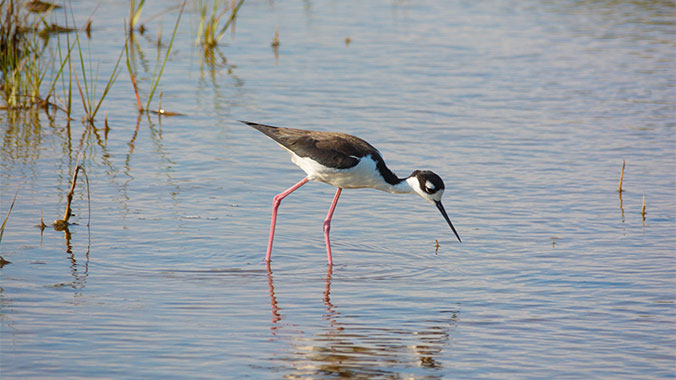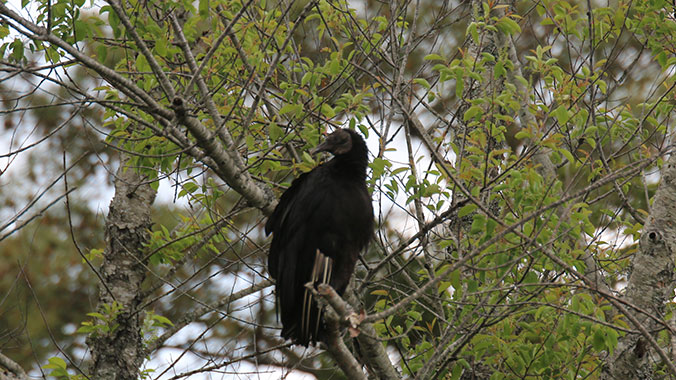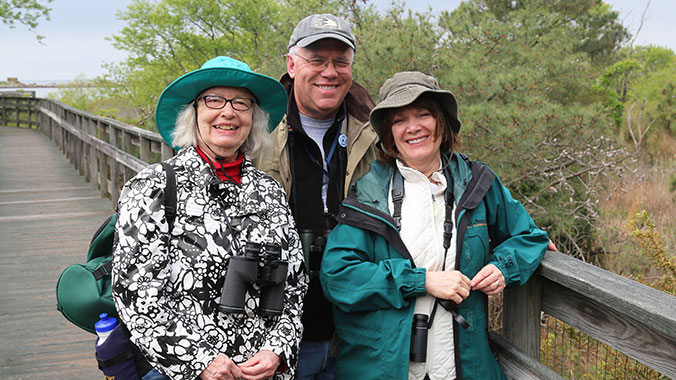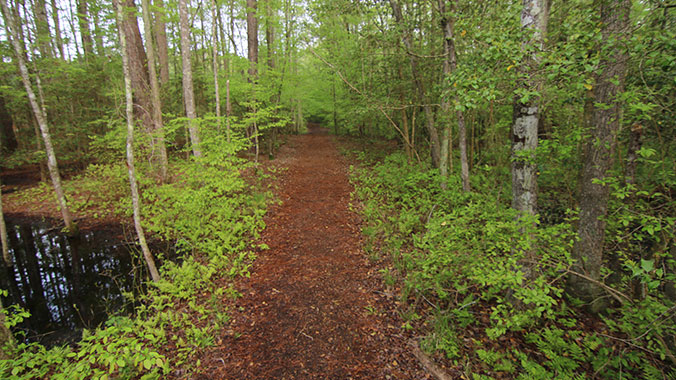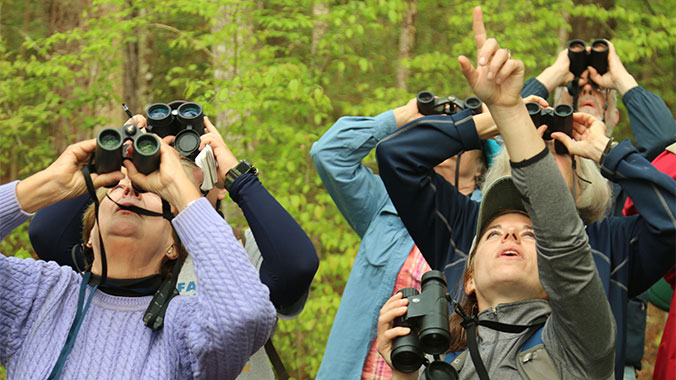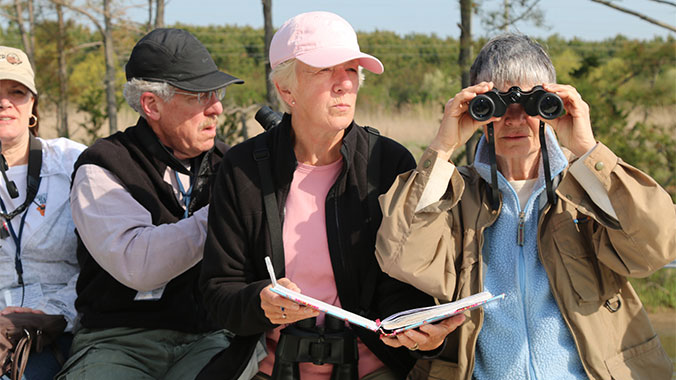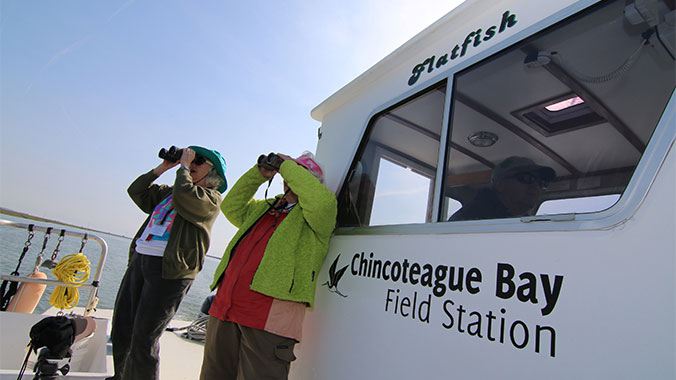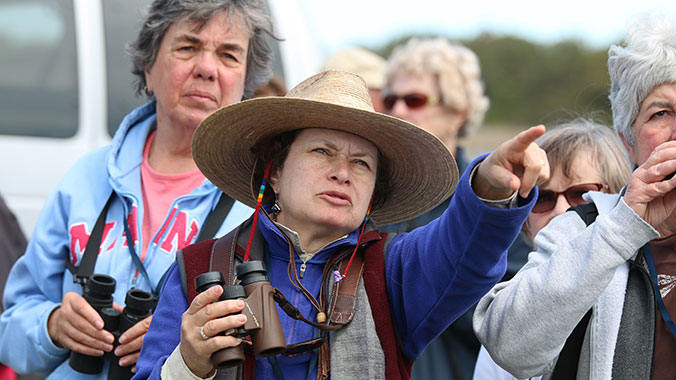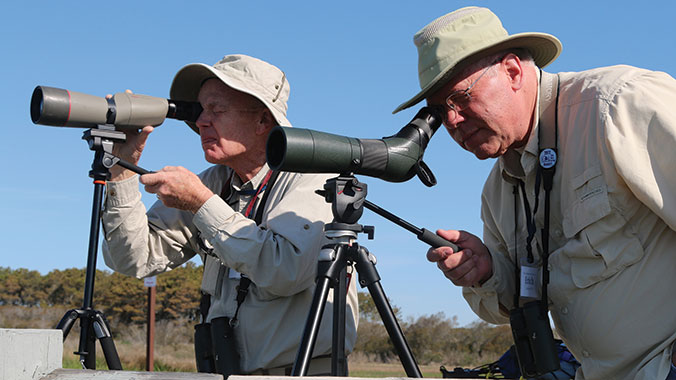Virginia
Birding Virginia’s Eastern Shore and Chincoteague Island
Program No. 2019RJ
Enjoy special access to Wallops Island and other protected birding destinations, where you’ll learn from experts as you look for the region’s more than 400 species of birds.
Itinerary
While we make every effort to ensure the accuracy of our published materials, programs are typically advertised more than a year prior to their start date.
Read More.
While we make every effort to ensure the accuracy of our published materials, programs are typically advertised more than a year prior to their start date. As a result, some program activities, schedules, accommodations, personnel, and other logistics occasionally change due to local conditions or circumstances. Should a major change occur, we will make every effort to alert you. For less significant changes, we will update you during orientation. Thank you for your understanding.
Duration
6 days
5 nights
What's Included
14 meals (
5B, 4L, 5D
)
3 expert-led lectures
7 expert-led field trips
1 performance
An experienced Group Leader
5 nights of accommodations
Taxes and customary gratuity
Road Scholar Assurance Plan
Day
1
Check-in, Registration, Orientation
Location:
Wallops Island
Meals:
D
Stay:
Chincoteague Bay Field Station
Activity Note
Field station check-in from 3:00 p.m.
Afternoon:
Program Registration: 3:00 – 5:00 p.m. Come to the Road Scholar table in the lobby to register with the program staff and get your welcome packet containing your room assignment, up-to-date schedule that reflects any last-minute changes, other important information, and to confirm when and where the Orientation session will take place. If you arrive late, please contact the Chincoteague Bay Field Station to find out where to meet the group.
Dinner:
In the Chincoteague Bay Field Station cafeteria, the dining staff will prepare and serve our meals cafeteria style, with options ranging from a hot meal to a diverse salad bar. Coffee, tea, water, and a selection of juices and sodas are available.
Evening:
Orientation. The Group Leader will greet everyone and lead introductions. We will review the up-to-date program schedule, discuss roles and responsibilities, logistics, safety guidelines, emergency procedures, and answer questions.
Day
2
Boat Trip, Chincoteague NWR, Birding Skills Review
Location:
Wallops Island
Meals:
B,L,D
Stay:
Chincoteague Bay Field Station
Activity Note
Getting on/off buses and on/off a boat with assistance. We will be participating in a guided boat tour in the morning. In the afternoon, we will access many parts of the refuge to take advantage of birding opportunities as they arise. Please dress according to the weather. It can be quite windy on the beach.
Breakfast:
In the Chincoteague Bay Field Station cafeteria, our staff will present an array of fruits, hot and cold cereals, meats, breads/biscuits, eggs, and pancakes for your choosing. Coffee, tea, water, and a selection of soft drinks are available.
Morning:
The tidal creeks and marshes and sandy shores surrounding Chincoteague and Assateague Islands are home to some elusive wetland birds. We'll climb aboard a pontoon boat to get up close and personal with this unique habitat and look for some of its residents. Common species include Great Blue Herons, Bald Eagles, Northern Harriers, Green Herons, Little Blue Herons, Great Egrets, Clapper Rails, and more!
Lunch:
The Eastern Shore is home to some outstanding American fare and seafood restaurants. Your meal will not disappoint at one of our fine local eateries.
Afternoon:
Chincoteague National Wildlife Refuge is one of the most visited refuges in the country, but we’ll be heading into its restricted back country to have the birds all to ourselves. The shallow pools, grasslands, and woodlands are managed to provide plenty of food and resting spots for native wildlife and migratory waterfowl, so the diversity of birds will not disappoint! We’ll be on the lookout for Glossy Ibis, Caspian Tern, Merlin, Whimbrel, and an assortment of sandpipers, not to mention the famous Chincoteague wild ponies!
Dinner:
In the cafeteria.
Evening:
We will begin each evening with a review of the birds that we encountered during the day. Hundreds of species migrate through this region during spring and fall and many regularly spend the winter months here. We’ll learn and practice key skills in turning any bird seen in the field into a positive identification. Also, we’ll get a review of the many resources birders today have at their fingertips; from field guides and magazines to websites and phone apps.
Day
3
Wallops & Chincoteague Birding, Guest Lecture
Location:
Wallops Island
Meals:
B,L,D
Stay:
Chincoteague Bay Field Station
Activity Note
Getting on/off buses multiple times throughout the day; driving up to 45 minutes between stops. Walking up to a mile at stops. We will be making many stops throughout the day to take advantage of birding opportunities as we find them. Our longest drive will not be longer than 45 minutes. Our longest walk will be about a mile, but will be taken at a very slow pace as we bird. Please dress according to the weather. It can be quite windy on the beach.
Breakfast:
In the cafeteria.
Morning:
We’ll spend the morning at a variety of local Chincoteague Island and Eastern Shore mainland birding sites looking for migrating songbirds, sparrows, and birds of prey. Our target species include Summer Tanager, Indigo Bunting, Prairie Warbler, Palm Warbler, Northern Harrier, and American Oystercatcher.
Lunch:
In the cafeteria.
Afternoon:
NASA-owned and restricted access Wallops Island provides an intriguing contrast between the innovative science and technology being studied there and the relatively untouched marshes and dunes systems. Resident Peregrine Falcons are often seen on the marsh. On the beach, we frequently get up-close views of rare Piping Plovers and Red Knots, as well as an assortment of gulls and terns like the Great & Lesser Black-backed Gulls and Royal Terns. We may be the only footprints of this Atlantic beach all day, so plan to look for shells or just relax and let the birds come to you! NOTE: Our access to Wallops Island will depend on the security level of the base at the time, which is influenced by a number of factors independent of the Chincoteague Bay Field Station and its actions.
Dinner:
The Eastern Shore is home to some outstanding American fare and seafood restaurants. Your meal will not disappoint at one of our fine local eateries.
Evening:
We will listen to a stimulating presentation by a local guest lecturer.
Day
4
Local Birding Hotspots, Free Afternoon, Ornithology Lecture
Location:
Wallops Island
Meals:
B,L,D
Stay:
Chincoteague Bay Field Station
Activity Note
Getting on/off buses multiple times throughout the day; driving up to 45 minutes between stops. We will be making many stops throughout the day to take advantage of birding opportunities as we find them. Our longest walk will be about a mile, but will be taken at a very slow pace as we bird. Please dress according to the weather.
Breakfast:
In the cafeteria.
Morning:
This morning we will travel to more local birding hotspots. The locations we choose will depend on what the latest local bird sighting reports are showing. Some possible locations for today's field trip might include forested nature trails or public boat landings.
Lunch:
In the cafeteria.
Afternoon:
Free time. This block of time has been set aside for your personal independent exploration to see and do what interests you most. Please refer to the list of Free Time Opportunities. The Group Leader will be happy to offer suggestions.
Dinner:
Get ready for a seafood feast! In the cafeteria, we will sample local crabs and shrimp, or, if you choose, chicken or roasted vegetables. It’s a traditional Chesapeake boil! Beverage options include coffee, tea, water, and a variety of soft drinks.
Evening:
Tonight we will hear an enlightening evening lecture by our field station staff on Ornithology and the Eastern Shore of Virginia.
Day
5
Pocomoke River SP, Ward Museum of Wildfowl Art, Musicians
Location:
Wallops Island
Meals:
B,L,D
Stay:
Chincoteague Bay Field Station
Activity Note
Getting on/off buses. Walking up to 1.5 miles at a very slow pace at State Park; possibly wet, muddy, and uneven ground on trail. Walking and standing for about 90 minutes at art museum; seating available.
Breakfast:
Breakfast will be a tailgate breakfast served in the field. Choose from hard-boiled eggs, fresh fruit, bagels, scones, yogurt, cream cheese, etc. with beverage options of coffee, tea, and orange juice.
Morning:
Heading north into Maryland, we will visit Maryland's Coastal Bays along the Atlantic Ocean. These protected areas are the perfect place to spot wading birds, waterfowl, and migratory species as they take advantage of plentiful feeding grounds and safe rest areas. Keep an eye out for waterfowl, Avocets, Yellowlegs, Common Loons, and a variety of sparrows.
Lunch:
We will pack our lunch with us and eat upon our arrival at the Ward Museum of Wildfowl Art. Lunch options will include a variety of sandwiches, fruits, chips, and cookies. Please bring a refillable water bottle. Extra water will be available.
Afternoon:
Nestled in the heart of the Atlantic Flyway, the Ward Museum of Wildfowl Art features the world's largest and finest public collection of decorative and antique decoys. As wildfowl have been celebrated in art across continents and throughout human history, the museum collection showcases the contributions of artists who have carved birds both as tools for the hunt and as objects of artistic enjoyment. The centerpiece of the Museum is the Championship Gallery, which holds nearly 40 years of award-winning and mindbogglingly intricate artwork from the Ward World Championship, the largest bird carving competition in the world.
Dinner:
In the cafeteria.
Evening:
This evening, we will have a wonderfully entertaining performance by a locally cherished musical group. They present Celtic, nautical, and original music in a humorous and original way while providing rich historical context to music of the Eastern Shore of Virginia and beyond!
Day
6
Program Concludes
Location:
Wallops Island
Meals:
B
Activity Note
Field station check-out 9:30 a.m.
Breakfast:
In the cafeteria. This concludes our program.
Morning:
If you are returning home, safe travels. If you are staying on independently, have a wonderful time. If you are transferring to another Road Scholar program, detailed instructions are included in your Information Packet for that program. We hope you enjoy Road Scholar learning adventures and look forward to having you on rewarding programs in the future. Don’t forget to join our Facebook page and follow us on Instagram. Best wishes for all your journeys!
Please select a day to update the map
Map details are not available for this location.

